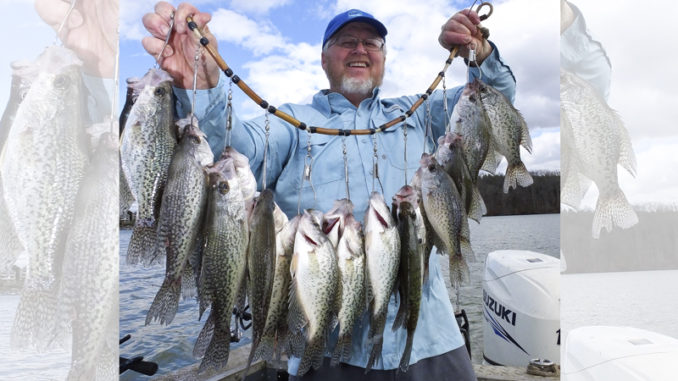
Crappie are still hungry — maybe just not quite as fat
Crappie are among the most-heavily fished species in the Carolinas before and during the spawn. But when the fat-fish-in-skinny-water adventure ends, many anglers move on to other species.
But the action on post-spawn crappie can rival any other time in terms of productivity. And catches still include plenty of slab crappie.
Jeff Manning of Gastonia, N.C., is a highly successful pro catfish angler. But his passion for crappie fishing runs deep. And targeting post-spawn papermouths is among his top favorite fishing fortes.
“When the crappie spawn ends, the crappie action doesn’t stop. It changes direction and shifts gears,” Manning said. “Anglers with a good plan can follow these panfish through the post-spawn and enjoy outstanding fishing.
“The basic premise is that crappies are moving from spawning areas back to deeper water during the post-spawn,” Manning said. “I’ve learned versatility in tactics is the key to consistently catching fish during post-spawn.”
Manning said long-line trolling, vertical fishing by tight-lining and using slip floats, anchoring and casting, shooting docks and fishing at night under the lights are all tactics for post-spawn crappie.
“Post-spawn crappies are quite predictable,” Manning said. “Although the big females have spawned, we still catch big fish — minus the poked-out belly full of eggs.”
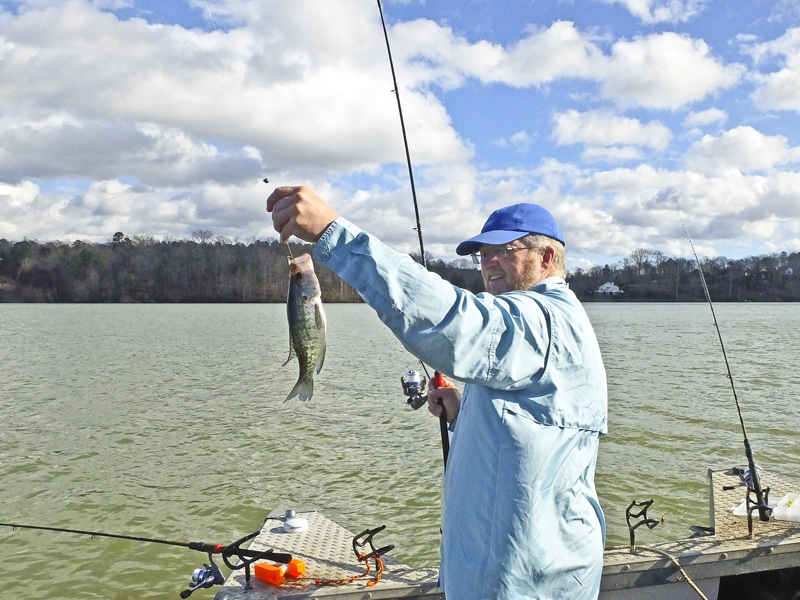
Long-line trolling for crappie
Manning said his first option is long-line trolling, a highly productive method that many anglers utilize in prespawn.
“Many don’t utilize it as much in post-spawn as they do in prespawn, yet it’s highly effective,” he said. “We’re targeting the fish as they retreat from the shallows but have not reached their hot-weather summer destinations. They’re on the move and potentially found in multiple areas, and these patterns change quickly, more so than during prespawn. To be successful, fishermen must also be quick to adapt.”
Since not all crappie spawn at the same time, he’ll also begin long-line trolling for post-spawn fish as the spawn fades.
“The bigger, sow crappies don’t linger long in the shallow spawning areas,” he said. “They move in, spawn and leave. I’ll target flats near the spawning site, particularly flats where I mark forage and that has cover that attracts crappies.”
Manning said during post-spawn, crappie congregate on flats more in a general area rather than compacted in small, isolated schools.
“Hundreds of crappies may be on a single flat, but concentrated in a general area within a similar depth pattern,” he said. “Thus, pulling multiple jigs with different-size jigs and assorted colors allows me to cover a broad area of the lake.
“I keep changing areas, speed and depths fished along with lure sizes and colors until I find the pattern of the day. Then, I focus my efforts on those specific parameters. It’s crucial to cover a lot of territory on some days, but when I determine the right pattern, the fish-catching can be fast and furious.”
Start in the back
Manning’s basic pattern of crappie hunting in the immediate post-spawn is to begin trolling in the back of the creeks, very near the spawning sites. As the water temperature warms, fish move further down the creeks to progressively deeper water.
“On some days, I’ll change my pattern and go all the way to the back of the creeks again to target late-spawners just moving out,” he said.
Manning said crappie will also get into “cover mode” during post-spawn, and he may troll over a brush pile or sunken tree and have multiple hookups.
“If this occurs, I’ll look at the cover closely with my down-scan graph, and if it lights up like a Christmas tree, with the ‘lights’ being lots of crappie, I’ll anchor so the boat sits right on top of the cover.”
Vertical slip-floats
He will first fish vertical tight-lines and a slip-float rig to better manage his depth control. When they do congregate like this on a specific target, limits are possible from a single stop.
“I’ll carry the extra fishing rigs during post-spawn because of this scenario,” he said. “When I find crappie locked on cover, vertical-fishing live minnows or small jigs is highly effective. I can also cast and retrieve jigs using light tackle from an anchored position.
Manning said he prefers slip floats when fishing vertically because once he determines the strike zone, he sets the float to keep the bait at that depth, usually just above the woody cover.
“This reduces snags and lost fish when fishing brush or sunken treetops,” he said.
Shooting docks is another post-spawn tactic he uses, especially docks that are deeper than others. Simply ease the boat up to the docks and slingshot the jig back under the docks.
“Light line and a sensitive-tipped rod are crucial, because the bite is often just a little ‘tick,” he said. “Multiple crappies may congregate in this type spot especially on sunny days because of the shade effect.”
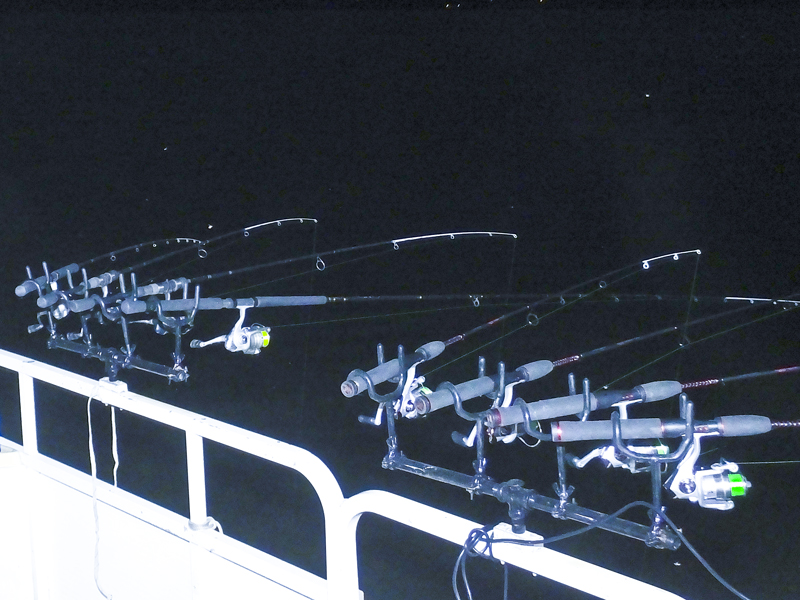
Under the lights
Finally, one of his real crappie-fishing loves is to fish at night under lights.
“This is a prime post-spawn tactic because I use lights to draw the crappie to my position,” he said. “My favorite targets are points that drop into deep water, the ledge of a channel and along at the base of a hump.
Manning said it’s not necessary to anchor over wooden cover; the light attracts batfish and crappie. He prefers to set up just before dark, and a solid anchor setup is crucial. That keeps him on target, and boat wakes or wind won’t knock him out of position.
“Years ago, I used white lights, but now I use green lights, specifically Illumisea Aquatic Lights, because they’re bright and rugged,” he said. “I’ll place the light a couple feet under the water, and I’ll fish from 3 feet deep down to just off the bottom until I determine a depth pattern.”
Lighted slip floats
He also fishes lighted slip floats near the edge of the circle of light from the powerful LED light, because that’s a prime spot for slabs.
“Most of the rigs I fish are down-lines with 8-pound test, a 1/0 wire hook with a No. 3 split-shot about 8 inches above the hook,” he said. “But the lighted floats I’ll cast out to cover the area where the ring of light from my lights end. On some nights, that seems to be the hotspot for slabs. I generally use minnows at night. But small jigs also work.”
Manning said fishing under the lights can be fast-paced. And he often limits and is heading home in two or three hours.
It’s time for great post-spawn crappie action, and with multiple techniques that produce great results. So pick a favorite or two and snag a limit of slabs.
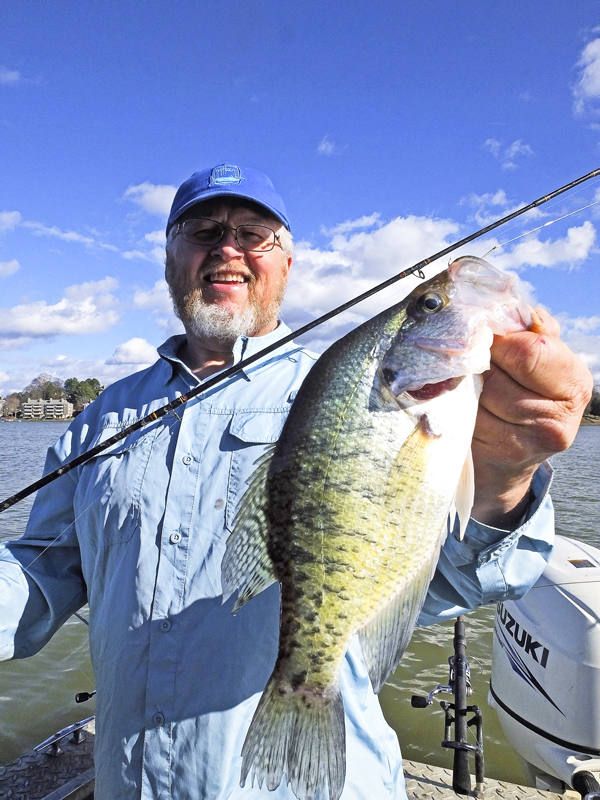
Long-Line Trolling Setup
Jeff Manning’s basic trolling setup is to fish eight long-line rigs, sometimes 10 if he has someone fishing with him. He’ll generally alternate jig sizes between 1/8- and 1/16-ounce. So at any speed, he’s constantly checking two different depths, and he continuously experiments with colors.
He’ll place two rigs about 60 feet straight out of the back of the boat with 1/16-ounce jigs and two more straight behind on each side loaded with 1/8-ounce jigs. Other rigs will fan out on each side of the boat at increasing angles from at about 45 and 90 degrees, with each rod longer than the previous to ensure good spacing of lures to cover more water and allow him the ability to maneuver the boat.
“With this 8-rig setup, I can adequately watch rods, reel fish, and make course corrections. And I can maneuver the boat in turns without snagging lures,” he said.
Make frequent turns when trolling for crappie
Manning uses either 6- or 8-pound test, depending on the basic depth of the crappie. The 8-pound test runs shallower than 6-pound test.
“I also don’t troll the jigs too far behind the boat. Because if you put them back too far, the ‘line drag’ pulls them up higher, making it harder to determine the strike zone,” he said. “And depth control is crucial to success.
“I make frequent turns when hunting crappies, not only to fish a different area, but when turning, the inside and outside rigs will travel at different speeds and depths. If I catch crappies on the outside rigs in a turn, I know they are traveling faster and shallower than the other rigs, so I can adjust my speed. Conversely if the inside rigs catch fish and others don’t in a turn, I know they are traveling slower and running deeper.”
Boat speed is a key and he’ll usually start at 0.7 miles per hour but varies speed up and down between 0.5 and 1.0 mph.

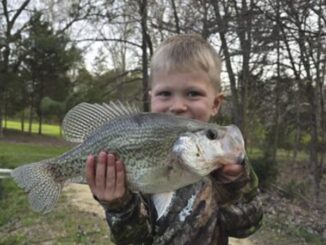



Planning my annual outing to Hertford, NC to fish for those red bellies, shell crackers, and whatever else will bite a cricket on the Perquimans and Chowan rivers. The first full moon of May is the 11th and according to legend the fish will spawn on the first full moon of May. I also do a little fishing with a fly rod and a popping bug as that seems to work as well. Bass fishing is also very good on both these rivers. I caught a big jack (Chain Pickerel for you yankees)on a slip cork with a cricket up next to the bank. Goes to show you, you never know what will bite. Great to be out on the river on a warm spring day watching the wildlife and greenery come to life.